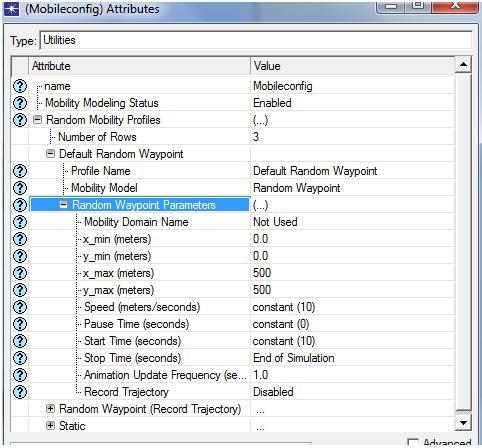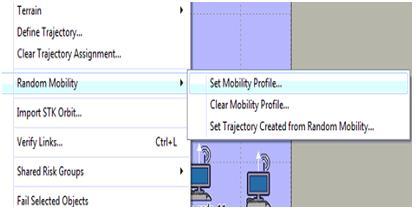The main constraint of a mobile launch program is the packet losses across the network. This could be kept at a minimum by keeping the nodes used in the simulation pre set against few mobility patterns and these nodes can be added using the mobile configuration program. This mobility pattern is very important as if defines the destination, source and speed of the mobile nodes and the functioning of the mobile network on the whole.
The following points should be considered to set the mobility of the mobile nodes.
- Right click on the object to edit mobile configuration object
- Choose random mobility profile from the various options that prop out.
- Expand the option, default random waypoint tab and set this as the required mobility model to the nodes. Check the corresponding screenshot given below for your reference.
From the above said process, random waypoint parameters are set and from the above screen it is clear that the speed of the mobile nodes is set to a constant value of 10, pause time is set to a constant value of 0 seconds and start time of the mobile nodes is repeated for every 10 seconds. Stop time of the simulation is set to bring about an end to the simulation as shown in the above screen.
The edited mobility profile should be applied to all the mobile nodes and this can be achieved by choosing the option, ‘set mobility’ from the topology menu. Refer to the pictorial representation below to clear any of your doubts.
Once the mobility profile is set as shown above, all the mobile nodes should be assigned with this random waypoint mobility which helps the nodes to move randomly to process the traffic and to deliver the corresponding packets to the destination side. With this step the process of setting up the mobility patterns to the network nodes is done and the next step is to define the performance DES metrics. Its process is as follows.


